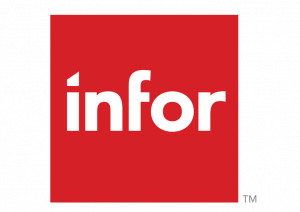This blog post is an excerpt from GovLoop’s recent guide “How to Effectively Communicate Government Workforce Reforms.” In it, we provide an overview of key workforce reforms happening at all levels of government. Download the full guide here.
Historically, the public sector has lagged behind the private in adopting innovations in human resource technology. But with baby boomers retiring in droves and millennials trickling in, innovations in the field are imperative for recruiting and retaining skilled professionals.
Today, agencies are at a technology crossroads. To learn more about agencies’ pressing HR challenges and advanced analytics and talent management solutions can help, GovLoop spoke with Laura Glass and Heather Sherlock, Senior Principals, Public Sector at Infor, a software company specializing in digital transformation for enterprise settings. Their experience spans enterprise resource planning with deep experience as HR practitioners across federal, state and local governments.
Coupled with manual HR processes, legacy systems make it hard for agencies to be efficient. Glass and Sherlock explained that updating human capital and talent management processes plays a big role in reducing costs, maximizing efficiency, increasing agility, improving security, and allowing an organization to direct more time and resources to mission-driven innovations. Organizations that continue to manage employee hours with outdated methods, like paper timecards, falter in each of these categories.
In terms of agility and security, many of today’s modern HR systems are designed to operate in the cloud and meet government’s stringent security standards. In addition to security benefits, updating outdated IT systems and processes can have wide-reaching impacts on employee recruitment and retention.
“When they show that they have modern recruiting technology, that’s the first phase of starting to recruit a talent,” Sherlock said. “You have that front-facing system with your HR. If you can show that that’s a modern system.”
But recruiting top-tier talent requires more than a well-designed exterior. Agencies must also find ways to cultivate prospective employees for future hiring rounds to ensure they are getting the most qualified candidates. Infor’s Talent Science, a cloud-based software suite that helps select, retain and develop employees with behavioral and performance data, can help.
As an example, if a school district wants to start building a pipeline of candidates, it can allow prospective teachers to submit applications throughout the year. That way, when the next round of hiring comes along, the organization will already have a list of interested parties, complete with detailed information about who would make the best fit.
Beyond the applicant database, organizations have begun to review their candidates more holistically, Sherlock said. Job experience is important, but a resume can only tell so much about a person. Using data analytics to link behavior to real business outcomes could reduce turnover and minimize the time and cost of recruiting new employees. Instead of placing all the weight on relevant experience, employers can factor in whether a candidate’s personality would work for a respective role and organization.
Unfortunately, hiring the perfect employee doesn’t guarantee that he or she will remain with the organization long-term.
To reduce turnover rates, some organizations are taking a more proactive approach to employee engagement. “If you can engage an employee during their first six to eight months of employment, it is proven they’re more likely to stay,” Sherlock said.
That engagement can come in a number of forms. For example, agencies have placed a higher emphasis on employees interacting with each other, especially from a knowledge sharing and wellness perspective. Glass explained that she’s seen organizations implement walking-step challenges and other fitness programs to encourage inter-office collaboration. Infor’s Human Capital Management software includes tools that can set agencies in the right direction in regards to engagement.
Another area where governments can increase engagement is by refining the concept of performance reviews, Glass said. Traditional models featured a midyear review and an annual review, but there’s been a shift toward more continuous, less formal appraisals. Some agencies now also have the option to bring in automated technology that can proactively recommend training classes to help employees reach their career goals.
“That gives employees a better sense of career direction, and a feeling that the organization is investing in them,” Glass said. “That, in turn, helps them to be happier, more satisfied, and more apt to stay at an organization.”
The end result is an organization made more efficient, agile and secure through its use of cloud-based, data-driven talent management — a solution that could become the standard in the coming years for governments.






Leave a Reply
You must be logged in to post a comment.